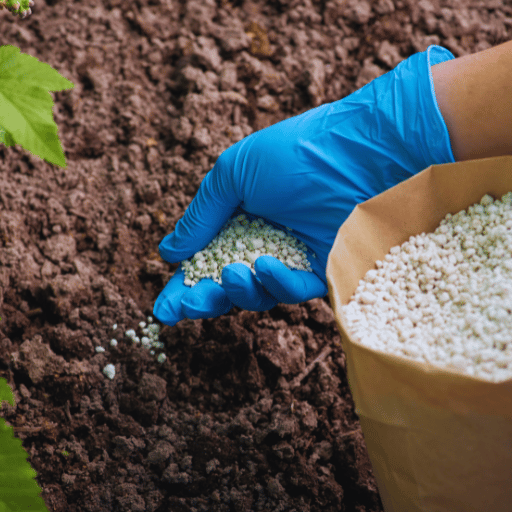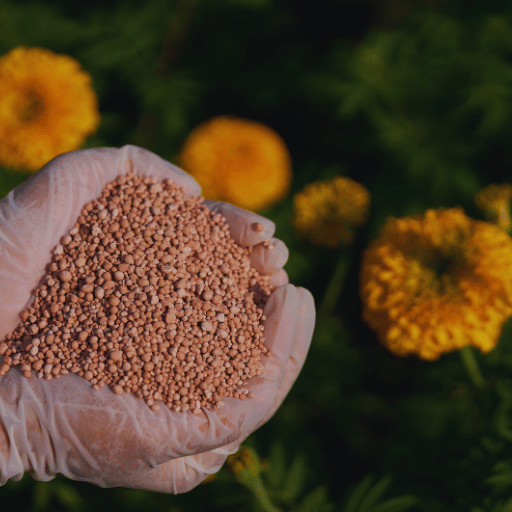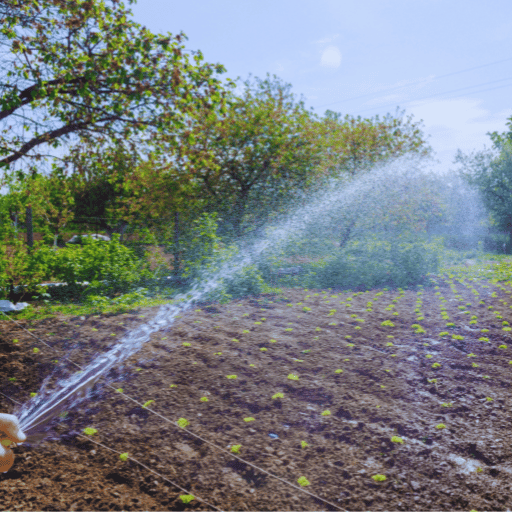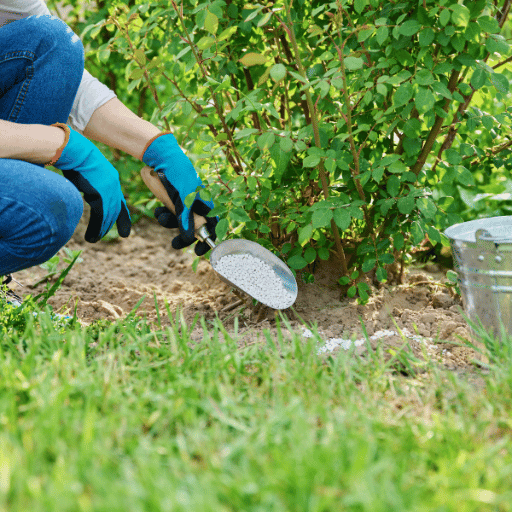3-1-1 NPK fertilizer is a specific blend designed to provide plants with a balanced supply of essential nutrients, consisting of 3% Nitrogen (N), 1% Phosphorus (P), and 1% Potassium (K). The NPK ratio indicates the proportion of these three vital nutrients in the fertilizer, each serving a unique role in promoting healthy plant growth. This formula is particularly rich in nitrogen, making it highly suitable for promoting lush foliage and vigorous plant development.
Importance of Balanced Fertilization in Gardening and Agriculture
Balanced fertilization is critical for the overall health and productivity of plants. In gardening and agriculture, applying a fertilizer with the right NPK ratio ensures that plants receive the precise nutrients they need at different growth stages. 3-1-1 NPK fertilizer is particularly useful for supporting the vegetative phase of plants, where nitrogen is crucial for chlorophyll production and green growth.
How 3-1-1 NPK Fertilizer Supports Plant Growth
The high nitrogen content in 3-1-1 NPK fertilizer makes it an ideal choice for encouraging leafy greens, grasses, and other nitrogen-loving plants to thrive. Nitrogen is essential for promoting photosynthesis, the process through which plants convert sunlight into energy. Meanwhile, the smaller amounts of phosphorus and potassium help to strengthen root systems and improve the plant’s overall resilience.
According to agricultural expert Dr. Lisa Thompson, “Fertilizers like 3-1-1 NPK are excellent for early-stage plant growth due to their emphasis on nitrogen, which drives vegetative development and prepares plants for future stages of growth.”
Understanding the Nitrogen Cycle

Explanation of the Nitrogen Cycle and Its Significance in the Ecosystem
The nitrogen cycle is a fundamental ecological process that involves the movement of nitrogen in various forms throughout the environment. It plays a crucial role in supporting plant growth and maintaining soil health. In this cycle, nitrogen transitions between the atmosphere, soil, and living organisms, undergoing processes like nitrogen fixation, nitrification, assimilation, ammonification, and denitrification. This cycle ensures that nitrogen is continuously recycled and made available for plants and other organisms to use.
The Role of 3-1-1 NPK Fertilizer in Contributing to the Nitrogen Cycle
3-1-1 NPK fertilizer significantly impacts the nitrogen cycle by providing a direct source of nitrogen to plants. When applied to the soil, the nitrogen in the fertilizer is converted into forms that plants can readily absorb, such as ammonium (NH4+) and nitrate (NO3-). This not only supports the plant’s growth but also integrates into the broader nitrogen cycle, enhancing the soil’s nitrogen content.
Agricultural researcher Dr. Michael Brown notes, “Applying nitrogen-rich fertilizers like 3-1-1 NPK helps maintain the nitrogen cycle’s balance by supplementing the soil with essential nutrients that plants can quickly utilize.”
How Nitrogen from Fertilizers is Absorbed by Plants and Its Transformation in the Soil
When you apply 3-1-1 NPK fertilizer, the nitrogen component is initially present in a form that may not be immediately accessible to plants. Through microbial activity in the soil, this nitrogen undergoes nitrification, transforming it into ammonium or nitrate forms that plants can absorb through their roots. Once taken up, the nitrogen becomes part of the plant’s cellular structure, promoting growth and enabling the production of proteins, enzymes, and chlorophyll.
This cycle continues as plants and organisms die, returning nitrogen to the soil, where it undergoes decomposition and ammonification, further fueling the nitrogen cycle. Using 3-1-1 NPK fertilizer helps sustain this natural process by replenishing the soil’s nitrogen levels, ensuring that plants have a consistent nutrient supply.
How 3-1-1 NPK Fertilizer Affects Soil Health
The Impact of 3-1-1 NPK Fertilizer on Soil Structure and Microbial Activity
The application of 3-1-1 NPK fertilizer can have a profound effect on soil structure and microbial activity. The nitrogen component plays a critical role in stimulating the growth of beneficial soil microorganisms, which are essential for breaking down organic matter and converting it into nutrients that plants can use. These microorganisms help enhance soil fertility and promote a balanced ecosystem within the soil.
Additionally, nitrogen-rich fertilizers like 3-1-1 NPK improve soil structure by enhancing its aeration and water retention capabilities, making it more conducive for plant roots to grow and absorb nutrients.
Benefits of Nitrogen-Rich Fertilizers in Promoting Soil Fertility
The primary benefit of using 3-1-1 NPK fertilizer lies in its high nitrogen content, which directly contributes to increasing soil fertility. Nitrogen is a key component of plant proteins and enzymes, which drive essential metabolic processes. Applying this fertilizer helps boost plant growth, resulting in more vigorous and robust vegetation, especially in nitrogen-demanding crops like leafy greens and grasses.
According to soil scientist Dr. Rachel Carter, “Nitrogen-based fertilizers like 3-1-1 NPK are vital for maintaining high soil fertility levels. They support the development of a healthy soil ecosystem, where beneficial microbes thrive and help break down nutrients more efficiently.”
Potential Negative Effects on Soil Health if Overused or Misapplied
While 3-1-1 NPK fertilizer has numerous benefits, overusing or misapplying it can lead to potential negative effects on soil health. Excessive nitrogen application can result in nutrient imbalances in the soil, where too much nitrogen suppresses the uptake of other essential elements like phosphorus and potassium. This imbalance can cause poor plant development, reduce crop yields, and even harm the delicate microbial life in the soil.
Moreover, over-fertilization can lead to nitrogen leaching into groundwater, contributing to environmental issues like water pollution and eutrophication of nearby water bodies. To prevent these problems, it is crucial to follow proper application guidelines and conduct regular soil tests to determine nutrient levels before applying 3-1-1 NPK fertilizer.

Benefits of Using 3-1-1 NPK Fertilizer in Agriculture
Benefits of 3-1-1 NPK Fertilizer in Home Gardens and Small-Scale Farming
3-1-1 NPK fertilizer is highly beneficial for home gardens and small-scale farming, providing a well-balanced nutrient mix that is ideal for promoting healthy plant growth. Its high nitrogen content makes it especially effective for cultivating leafy vegetables, herbs, and ornamental plants that require vigorous foliage growth. This fertilizer is easy to use and suitable for a wide range of crops, making it a favorite among gardeners and small-scale farmers.
The balanced nutrient ratio of 3-1-1 NPK also ensures that plants receive a steady supply of phosphorus and potassium, which support root development and improve the plant’s overall resilience against diseases and environmental stress.
How the High Nitrogen Content in 3-1-1 NPK Fertilizer Boosts Plant Growth
The significant nitrogen concentration in 3-1-1 NPK fertilizer plays a crucial role in boosting plant growth, particularly for crops that rely on lush, green foliage, such as leafy greens, grasses, and cereal crops. Nitrogen is a key component of chlorophyll, the molecule responsible for photosynthesis, which allows plants to convert sunlight into energy. With sufficient nitrogen, plants develop stronger leaves, stems, and an overall robust structure, making them more productive.
According to horticulturist Dr. Elaine Morgan, “Fertilizers like 3-1-1 NPK are essential for accelerating plant growth during the vegetative stage. The nitrogen-rich formula supports rapid leaf development and helps build a solid foundation for future flowering and fruiting.”
Role of Phosphorus and Potassium in Enhancing Root Development and Overall Plant Health
While nitrogen is the star of the 3-1-1 NPK fertilizer, the presence of phosphorus and potassium is equally important. Phosphorus plays a crucial role in root development, helping plants establish a strong root system that can absorb nutrients and water efficiently. This nutrient is vital for seedlings and young plants that need to develop deep, healthy roots.
Potassium, although present in smaller amounts, helps to strengthen plant immunity, improve drought tolerance, and support the overall health of the plant. Together, these nutrients make 3-1-1 NPK fertilizer a versatile option for gardeners aiming to enhance the growth and resilience of their crops.
Environmental Impact of Fertilizer Use on the Nitrogen Cycle
How the Use of Fertilizers Like 3-1-1 NPK Influences the Nitrogen Cycle in the Environment
The use of 3-1-1 NPK fertilizer has a significant impact on the nitrogen cycle, a critical process that maintains nitrogen balance within ecosystems. When applied to soil, the nitrogen in the fertilizer becomes part of the nitrogen cycle by transforming into compounds that plants can easily absorb, such as ammonium (NH4+) and nitrate (NO3-). This helps boost plant growth and increases the efficiency of nutrient cycling in the soil.
However, an overabundance of nitrogen from fertilizers can disrupt the natural nitrogen cycle, leading to issues like nutrient imbalances and changes in soil microbial activity. Proper management of 3-1-1 NPK fertilizer is essential to prevent these disruptions and support sustainable agricultural practices.
Potential Risks: Nitrogen Runoff and Groundwater Contamination
One of the major risks associated with using nitrogen-rich fertilizers like 3-1-1 NPK is nitrogen runoff, where excess nutrients wash away into nearby water sources due to heavy rain or improper application. This runoff can cause eutrophication, a process where water bodies become overly enriched with nutrients, leading to algal blooms and oxygen depletion, which harm aquatic life.
Another concern is groundwater contamination, which occurs when nitrogen leaches through the soil into underground water reserves. High levels of nitrates in drinking water can pose serious health risks, particularly for infants and pregnant women. To minimize these risks, it’s crucial to follow best practices for fertilizer application and avoid over-fertilization.
Strategies to Minimize Environmental Impact When Using 3-1-1 NPK Fertilizer
To reduce the environmental impact of using 3-1-1 NPK fertilizer, consider the following strategies:
- Precision Application: Apply the fertilizer directly to the root zones of plants to reduce the amount of nitrogen that could potentially run off or leach into the groundwater.
- Soil Testing: Conduct regular soil tests to determine the exact nutrient needs of your soil before applying 3-1-1 NPK fertilizer. This ensures that you only use the amount required, preventing nutrient overload.
- Buffer Zones: Create buffer zones around water bodies to trap any potential runoff from reaching streams or lakes.
- Timing and Weather Conditions: Avoid applying fertilizer before heavy rains, as this increases the risk of nutrient washout. Instead, apply during periods of moderate moisture or when rainfall is not expected for a few days.
By implementing these strategies, you can use 3-1-1 NPK fertilizer effectively while minimizing its environmental impact and supporting the nitrogen cycle’s natural balance.
Proper Application Techniques for 3-1-1 NPK Fertilizer
Best Practices for Applying 3-1-1 NPK Fertilizer to Maximize Effectiveness
To get the best results from 3-1-1 NPK fertilizer, it’s important to follow a few key application techniques. Proper application ensures that the nutrients are delivered efficiently to the plants without wasting resources or harming the environment. Here are some best practices:
- Apply During Early Growth Stages: The ideal time to use 3-1-1 NPK fertilizer is during the early stages of plant growth when they require more nitrogen to develop strong leaves and stems. Applying at this stage helps boost the vegetative growth that sets the foundation for the plant’s overall health.
- Spread Evenly: Use a broadcast spreader for large areas or a handheld spreader for smaller patches to ensure an even distribution of the fertilizer. This helps prevent patchy growth and ensures that all plants receive the same amount of nutrients.
- Water Immediately After Application: Lightly water the soil after applying 3-1-1 NPK fertilizer to help the nutrients dissolve and reach the root zone quickly. This also reduces the risk of the fertilizer sitting on the surface, which can lead to nutrient losses through evaporation or runoff.
Seasonal Considerations: The Best Times of Year to Apply This Fertilizer Based on Plant Types
The timing of your fertilizer application can vary depending on the type of plants you are growing and their seasonal growth patterns:
- Cool-Season Plants (e.g., lettuce, spinach, and peas): Apply 3-1-1 NPK fertilizer in the early spring or late fall to support their active growth periods.
- Warm-Season Plants (e.g., tomatoes, peppers, and cucumbers): Apply the fertilizer in late spring or early summer when these plants are in their rapid growth phase.
- Lawns and Grasses: For grasses that grow actively in the cooler months, such as fescue or ryegrass, a fall application of 3-1-1 NPK fertilizer helps prepare them for the next growing season.
Adjusting the Quantity of 3-1-1 NPK Fertilizer Depending on Soil Conditions and Plant Needs
It’s crucial to tailor the amount of 3-1-1 NPK fertilizer you apply based on the specific needs of your soil and plants:
- Soil Test Results: Conducting a soil test will guide you in determining how much nitrogen, phosphorus, and potassium are already present in your soil. This prevents over-fertilization and helps you apply the right amount of fertilizer to address nutrient deficiencies.
- Plant Requirements: Some plants, especially those with high nitrogen needs like leafy greens, may require more frequent or higher doses of 3-1-1 NPK fertilizer, while others may need less.
- Avoid Over-Fertilization: Always start with a lower dose and gradually increase if necessary, monitoring plant response closely to avoid over-fertilization, which can lead to nutrient imbalances and soil health issues.
Implementing these techniques will ensure that you get the maximum benefit from 3-1-1 NPK fertilizer, supporting healthy and vigorous plant growth while minimizing potential risks.

Comparing 3-1-1 NPK Fertilizer to Other Common Fertilizer Ratios
Comparison with Other Popular Fertilizer Ratios like 10-10-10 and 5-5-5
3-1-1 NPK fertilizer is often compared to more balanced fertilizers like 10-10-10 and 5-5-5, which contain equal proportions of nitrogen, phosphorus, and potassium. Here’s how they differ:
- 10-10-10 Fertilizer: This formula provides a balanced nutrient ratio, making it a versatile option for a wide variety of plants. It is ideal for general-purpose fertilization when plants need equal amounts of all three nutrients. However, compared to 3-1-1 NPK fertilizer, it may be too high in phosphorus and potassium for plants that primarily require nitrogen to boost leaf and stem growth.
- 5-5-5 Fertilizer: Like the 10-10-10 ratio, 5-5-5 fertilizer offers a balanced supply of nutrients but at lower concentrations. It is often used for maintaining established plants rather than promoting rapid growth. For plants that are in the early stages of growth and need a higher nitrogen supply, 3-1-1 NPK fertilizer is a more suitable choice.
Highlighting the Unique Advantages of 3-1-1 NPK Fertilizer for Nitrogen-Dependent Plants
The primary advantage of 3-1-1 NPK fertilizer is its focus on nitrogen, which makes it particularly effective for plants that require vigorous vegetative growth. Nitrogen is essential for:
- Leafy greens like spinach, lettuce, and kale, where lush foliage is the primary goal.
- Grasses and lawns, which thrive on nitrogen to maintain their green color and dense coverage.
- Herbaceous plants and shrubs that benefit from strong stems and healthy foliage.
Unlike more balanced fertilizers, 3-1-1 NPK fertilizer ensures that these nitrogen-loving plants get exactly what they need for rapid growth without an excess of phosphorus or potassium that could cause unnecessary nutrient build-up.
When to Choose 3-1-1 NPK Fertilizer Over Other Formulations
Choosing 3-1-1 NPK fertilizer is most beneficial when:
- You are focusing on growing plants that require high nitrogen levels for leafy growth and don’t need as much support for flowering or fruiting.
- Soil tests reveal a deficiency in nitrogen but adequate levels of phosphorus and potassium.
- You want to promote early-stage growth in seedlings or young plants, where nitrogen plays a critical role in developing a robust vegetative structure.
For more mature plants or those in the flowering and fruiting stages, other formulations like 10-10-10 or 5-5-5 might be a better fit to provide a balanced supply of nutrients.
This comparison highlights why 3-1-1 NPK fertilizer is a strategic choice for gardeners and farmers aiming to maximize the growth of nitrogen-dependent plants while avoiding unnecessary nutrient surpluses.
Common Mistakes to Avoid When Using 3-1-1 NPK Fertilizer
Over-Fertilization: The Risks of Applying Too Much Nitrogen and Its Effects on Plants and Soil Health
One of the most common mistakes when using 3-1-1 NPK fertilizer is over-fertilization, particularly due to its high nitrogen content. Applying too much nitrogen can lead to several problems, including:
- Nutrient Imbalances: Excess nitrogen can interfere with the absorption of other essential nutrients, such as phosphorus and potassium, which are crucial for root development and overall plant health.
- Fertilizer Burn: High concentrations of nitrogen can damage the plant’s roots and leaves, causing them to turn brown or yellow, a condition known as fertilizer burn.
- Environmental Impact: Over-fertilization can result in nitrogen leaching into the groundwater or runoff into nearby water bodies, leading to water pollution and contributing to problems like algal blooms.
Ignoring Soil Testing: Why Soil Analysis Is Crucial Before Using 3-1-1 NPK Fertilizer
Another common error is neglecting to perform a soil test before applying 3-1-1 NPK fertilizer. Soil testing provides valuable information about the nutrient levels in your soil, helping you determine if there is a true need for additional nitrogen. Ignoring this step can lead to:
- Wasted Resources: Applying fertilizer when it is not needed results in wasted time, money, and effort.
- Nutrient Overload: Without understanding the soil’s nutrient composition, you may unintentionally over-fertilize, causing harm to both the soil and the plants.
Experts recommend conducting a soil test at least once a year to tailor your fertilization practices accurately to the needs of your garden or crops.
Misapplication Techniques: Common Errors in Fertilizing and How to Avoid Them
Proper application of 3-1-1 NPK fertilizer is crucial to maximize its effectiveness. Common mistakes in fertilizing techniques include:
- Uneven Distribution: Spreading the fertilizer unevenly can lead to patches of excessive growth and areas of poor plant health. To avoid this, use a broadcast spreader for larger areas or a handheld spreader for precision in smaller spaces.
- Applying Fertilizer on Dry Soil: For best results, apply 3-1-1 NPK fertilizer to damp soil. Moisture helps the fertilizer dissolve quickly, ensuring the nutrients are absorbed efficiently by the roots.
- Incorrect Timing: Fertilizing during extreme weather conditions, such as heavy rain or drought, can reduce the effectiveness of the fertilizer. Always check the weather forecast and choose a day with moderate conditions for application.
Following these guidelines will help you avoid common pitfalls and ensure that 3-1-1 NPK fertilizer delivers optimal benefits to your plants and soil.
Expert Opinions on the Use of 3-1-1 NPK Fertilizer
Quotes and Insights from Agricultural Experts on the Effectiveness of 3-1-1 NPK Fertilizer
Experts in agriculture and horticulture emphasize the benefits of using 3-1-1 NPK fertilizer for nitrogen-loving plants. Dr. Anna Lee, a soil scientist, explains, “The high nitrogen content in 3-1-1 NPK fertilizer is ideal for supporting leafy growth and promoting a robust vegetative structure in plants. It is especially effective for crops that require a significant nitrogen boost during their initial growth stages.”
Horticulturist James Carter adds, “The balanced yet nitrogen-focused formulation of 3-1-1 NPK makes it a versatile choice for gardeners looking to enhance plant foliage without overwhelming the soil with excessive phosphorus or potassium.”
Real-Life Case Studies from Farmers or Gardeners Who Have Successfully Used 3-1-1 NPK Fertilizer
- Sarah Miller, a small-scale organic farmer, reported significant success using 3-1-1 NPK fertilizer on her spinach and lettuce crops. She noticed a 30% increase in leaf size and overall plant health compared to previous growing seasons when she used a balanced 10-10-10 fertilizer.
- In another example, Green Thumb Gardening, a community garden in California, switched to 3-1-1 NPK fertilizer for their herbs and ornamental plants. The gardeners observed that the plants developed denser foliage and richer green color, indicating the positive impact of the higher nitrogen levels on their growth.
These real-life examples demonstrate the effectiveness of 3-1-1 NPK fertilizer in boosting the growth and health of nitrogen-dependent plants, particularly in controlled garden and small-scale farming environments.
Recommendations for Achieving the Best Results When Using 3-1-1 NPK Fertilizer
To get the most out of 3-1-1 NPK fertilizer, experts recommend the following practices:
- Start with a Soil Test: Always perform a soil test before application to understand your soil’s nutrient needs and prevent over-fertilization.
- Apply During Early Growth Stages: Use this fertilizer primarily during the early vegetative stages to maximize its benefits for leafy growth.
- Water Immediately After Application: Lightly watering the soil after fertilization ensures that the nutrients dissolve quickly and reach the root zone for better absorption.
- Combine with Organic Practices: Supplementing 3-1-1 NPK fertilizer with compost or other organic matter can improve soil structure and promote a more sustainable approach to plant nutrition.
By following these expert recommendations, you can optimize the use of 3-1-1 NPK fertilizer to achieve the healthiest, most productive growth for your plants.
FAQ: Understanding 3-1-1 NPK Fertilizer and Its Effects
1. What is 3-1-1 NPK fertilizer?
3-1-1 NPK fertilizer is a balanced fertilizer with a ratio of 3% Nitrogen (N), 1% Phosphorus (P), and 1% Potassium (K). It is primarily used to support leafy growth in plants, making it ideal for vegetables, grasses, and other plants that require a higher nitrogen level during their growth phase.
2. How does 3-1-1 NPK fertilizer affect the nitrogen cycle?
The use of 3-1-1 NPK fertilizer influences the nitrogen cycle by adding nitrogen to the soil, which is then transformed by soil microbes into forms that plants can absorb. This process enhances plant growth but can also disrupt the nitrogen cycle if overused, leading to nutrient imbalances and environmental concerns like nitrogen runoff.
3. Is 3-1-1 NPK fertilizer safe for all types of plants?
While 3-1-1 NPK fertilizer is highly effective for nitrogen-loving plants like leafy greens and grasses, it might not be suitable for flowering or fruiting plants that require higher levels of phosphorus and potassium. It’s important to choose the right fertilizer based on the specific needs of your plants.
4. Can I use 3-1-1 NPK fertilizer in my vegetable garden?
Yes, 3-1-1 NPK fertilizer is an excellent choice for vegetable gardens, especially for growing leafy greens like spinach, lettuce, and kale. The high nitrogen content supports vigorous leaf growth, which is essential for these types of vegetables.
5. What are the benefits of using 3-1-1 NPK fertilizer compared to other ratios like 10-10-10?
The key benefit of 3-1-1 NPK fertilizer is its focus on nitrogen, which is essential for foliage development. Unlike 10-10-10 or 5-5-5 fertilizers that offer balanced nutrients, 3-1-1 is better suited for plants that primarily need nitrogen for growth rather than balanced levels of phosphorus and potassium.
6. How should I apply 3-1-1 NPK fertilizer to get the best results?
For best results, apply 3-1-1 NPK fertilizer during the early growth stages of your plants. Make sure to spread it evenly over the soil, water the area lightly afterward, and follow the recommended application rates to avoid over-fertilization.
7. Are there any risks associated with using too much 3-1-1 NPK fertilizer?
Overusing 3-1-1 NPK fertilizer can lead to fertilizer burn, where plants suffer from yellowing leaves and root damage due to excessive nitrogen. It can also cause nitrogen runoff into water bodies, leading to environmental issues like eutrophication.
8. How does 3-1-1 NPK fertilizer impact soil health in the long term?
When used correctly, 3-1-1 NPK fertilizer can enhance soil health by increasing its nitrogen content, promoting microbial activity, and improving plant growth. However, overuse or misuse can result in nutrient imbalances, decreased soil fertility, and reduced microbial diversity.
9. Is it necessary to conduct a soil test before using 3-1-1 NPK fertilizer?
Yes, conducting a soil test is crucial before applying 3-1-1 NPK fertilizer to understand your soil’s nutrient needs. This prevents over-fertilization, ensures that you apply the right amount of nutrients, and helps you achieve the best results for plant growth.







